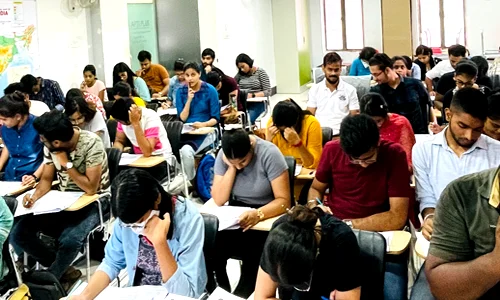



The Central Pay Commission (CPC) is an expert body set up by the Government of India to review and recommend changes in the salaries, allowances, and pensions of central government employees and defense personnel. While it ensures fairness and equity in public sector compensation, CPC recommendations often pose fiscal challenges due to their impact on government expenditure. Key issues include infrequent revisions, weak links between pay and performance, and disparities across services and states. Future reforms suggest establishing a permanent pay review body, introducing performance-linked pay, and aligning revisions with fiscal sustainability. Overall, the CPC plays a crucial role in balancing employee welfare, administrative efficiency, and fiscal discipline in India.
Click to View MoreIn October 2025, India’s Goods and Services Tax collections reached ₹1,95,936 crore, up 4.6% from the previous year, partly due to festive spending. GST, introduced in 2017, replaced multiple indirect taxes to create a unified system. While industrialized states like Maharashtra, Karnataka, Gujarat, Tamil Nadu, and Haryana contributed over 40% of revenue, 20 states saw declines compared to pre-GST levels. Analysis shows that overall GST revenue remains lower than pre-GST taxes, with states like Mizoram and Nagaland improving collections, while Punjab, Chhattisgarh, Karnataka, Madhya Pradesh, and Odisha experienced significant drops.
Click to View MoreIndia’s public debt, currently around 57% of GDP, has been rising due to persistent fiscal deficits, growing welfare and infrastructure spending, and higher interest costs. High debt limits fiscal flexibility, increases taxpayer burden, and can slow economic growth. The government is addressing this through fiscal consolidation, tax reforms, optimized expenditure, and debt management strategies, aiming for a sustainable debt-to-GDP ratio of 50% by FY31 while supporting economic growth.
Click to View More
Trickle-down economics is a theory that suggests benefits given to the rich and businesses—like tax cuts and incentives—will eventually reach the poor through job creation and economic growth. In India, this approach gained importance after the 1991 liberalization, leading to higher GDP but also rising inequality. While economic reforms boosted investment and infrastructure, wealth concentration limited its impact on lower-income groups. To ensure balanced growth, India now focuses on combining market-driven policies with welfare and inclusion measures such as MGNREGA, PM-KISAN, and digital empowerment initiatives.
Click to View MoreThe Reserve Bank of India (RBI) manages rupee depreciation through tools like selling US Dollars and adjusting interest rates, addressing factors like trade deficits and capital outflows. A weaker rupee boosts exports but exacerbates inflation and increases debt costs, crucial for India's economic stability.
Click to View MoreThe GST reform aims to simplify the indirect tax regime, reduce compliance costs, and address the inverted duty structure. Despite potential inflation and revenue concerns, this reform is crucial for tax administration, formalization, and cooperative federalism.
Click to View MoreThe 56th GST Council meeting approved a simplified two-tier tax structure, scrapping old slabs, to make goods and services more affordable. The "Next-Generation GST Reforms" aim to boost consumption, support key sectors, and streamline the tax system for a more transparent Indian economy.
Click to View More
© 2025 iasgyan. All right reserved